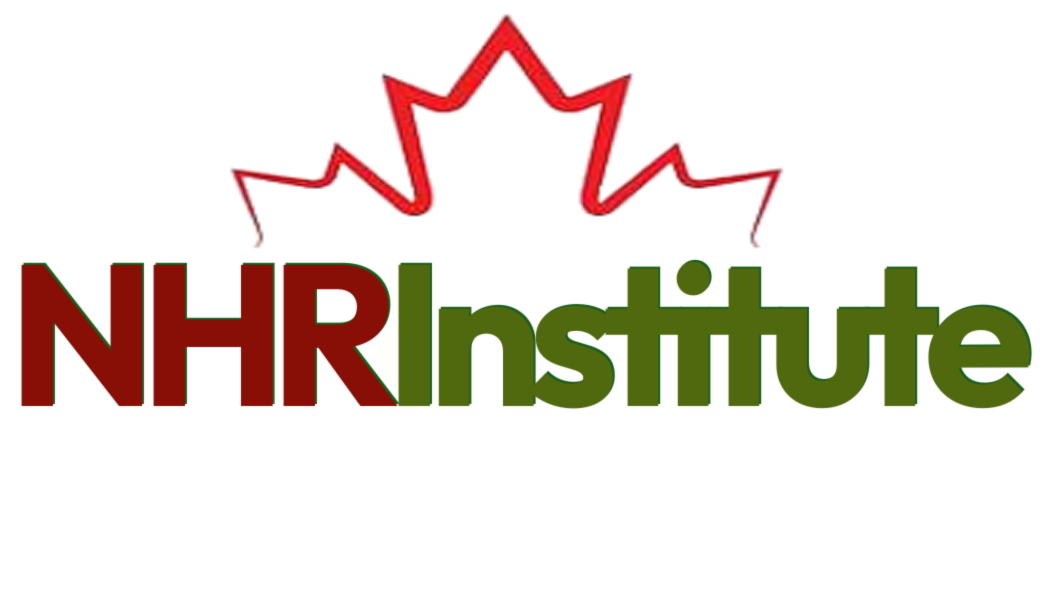Technology
The Fundamental Questions
The rapid expansion of technology can be attributed to several key factors that have been driving innovation and adoption across the globe:
- Advances in Artificial Intelligence (AI) and Machine Learning (ML): AI and ML are driving a new wave of technology across industries. These technologies allow systems to learn from data, make decisions, and automate processes, leading to faster problem-solving and more personalized services. The rapid growth in AI has transformed everything from healthcare to entertainment, making it a key factor in technological expansion.
- Investment in Research and Development (R&D): Heavy investment in R&D by governments, private companies, and startups has accelerated breakthroughs in various fields. The tech industry, in particular, has seen massive funding for developing new products and services, which has resulted in a steady stream of innovations.
- Globalization and Collaboration: The interconnectedness of the global economy has fostered international collaboration. Companies, universities, and research institutes from different countries now work together more frequently on solving complex problems, sharing knowledge and ideas. This international cooperation speeds up the development and application of new technologies.
- Demand for Automation and Efficiency: As industries and consumers seek greater efficiency, there has been increased demand for automation solutions. Industries like manufacturing, logistics, healthcare, and finance are increasingly relying on automation and digital technologies to streamline operations, reduce costs, and improve performance.
- Venture Capital and Entrepreneurial Activity: The rise of venture capital funding has provided startups with the financial resources needed to innovate and bring new technologies to market. Entrepreneurs are rapidly developing new ideas and turning them into successful tech companies, which drives further innovation and competition.
- Digital Transformation of Industries: Traditional industries such as finance, retail, education, and transportation are undergoing digital transformations. Businesses are adopting new technologies to stay competitive, improve customer experiences, and enhance their operational efficiency, which leads to greater technological adoption across the board.
- Consumer Demand for Technology: Consumers’ growing reliance on digital devices, apps, and services has driven companies to innovate continually. With consumers demanding faster, more reliable, and more sophisticated technologies, businesses are motivated to create and deliver cutting-edge solutions.
- Government Policies and Initiatives: Governments worldwide are increasingly recognizing the importance of technology for economic growth and national security. Many have implemented policies that promote innovation, such as funding for research, tax incentives for tech companies, and programs to encourage tech education and workforce development.
- Improved Manufacturing Techniques: Advances in manufacturing processes, such as 3D printing and automation, have made it easier and more cost-effective to produce high-quality, complex products at scale. This has helped lower the cost of many technologies, making them more widely available.
- The Rise of Cloud Computing: The advent of cloud computing has made it easier for businesses and individuals to access powerful computing resources without the need for expensive infrastructure. This has enabled faster software development, data storage, and the creation of new online services and platforms.
- Advancements in Computing Power: One of the primary catalysts for rapid technological growth is the increase in computing power. Moore’s Law, which predicts that the number of transistors on a microchip doubles approximately every two years, has led to exponential improvements in processing speed and data storage. This has enabled the development of more powerful and efficient devices.
- Increased Access to the Internet: The widespread availability of the internet has connected billions of people and businesses, creating a global digital ecosystem. With internet access, innovation and information can spread faster than ever before. The ability to collaborate, share ideas, and access resources online has significantly accelerated technological development.
Together, these factors have created a dynamic environment for technological innovation, leading to the rapid development and deployment of new technologies that continue to shape industries and everyday life.
Technology brings a wide range of benefits across various aspects of life. Here are some key advantages:
- Increased Efficiency and Productivity: Automation, software tools, and digital communication streamline tasks, making it easier and faster to accomplish work. This improves productivity in industries, businesses, and even at a personal level.
- Improved Communication: Technology has revolutionized communication, making it easier to connect with people worldwide. Platforms like social media, email, video conferencing, and instant messaging allow for real-time interaction, which helps both personal and professional relationships.
- Access to Information: The internet provides an almost unlimited resource for learning and research. Information is now at our fingertips, making it easier to gain knowledge, stay informed, and solve problems quickly.
- Healthcare Advancements: Technology has transformed healthcare with innovations like telemedicine, advanced diagnostic tools, robotic surgeries, and improved drug development. These advancements have made healthcare more efficient, precise, and accessible.
- Convenience and Comfort: From smart homes to online shopping, technology simplifies daily life. Devices like smartphones, wearables, and appliances make tasks easier and provide personalized solutions to improve comfort.
- Economic Growth: Technological advancements create new industries, job opportunities, and economic growth. For instance, the rise of tech companies, e-commerce, and digital platforms has had a major impact on global economies.
- Global Collaboration: Technology allows people and organizations to collaborate across borders. Shared digital platforms enable teams from different parts of the world to work together, share resources, and solve global challenges.
- Sustainability: Innovations in clean energy, agriculture, and waste management are helping address environmental challenges. Technology aids in monitoring environmental impact and finding solutions to reduce carbon footprints.
- Security: Modern technology provides enhanced security systems, both digital (like encryption, firewalls, and antivirus) and physical (like smart home security systems). This gives individuals and organizations greater protection from threats.
Entertainment and Creativity: From video games to virtual reality, technology has expanded the ways people can engage with entertainment and explore their creative potential. Tools for digital art, music production, and filmmaking have made it easier to create and share new forms of media.
While technology offers these benefits, it’s also important to consider the challenges it can bring, such as privacy concerns, over-reliance, and the digital divide. But when used thoughtfully, it can significantly improve our quality of life.
While technology has brought significant benefits, it also comes with its share of drawbacks. Some of the major downsides include:
- Privacy Concerns: As we rely more on digital platforms and devices, personal information is increasingly stored and shared online. This can lead to privacy violations, data breaches, and unauthorized surveillance. Social media, in particular, can expose users to risks related to personal data collection and misuse.
- Cybersecurity Threats: The more connected we are, the more vulnerable we become to cyberattacks. Hackers can exploit vulnerabilities in software or networks to steal sensitive data, cause financial losses, or disrupt services. Cybercrime has become a significant concern for both individuals and organizations.
- Job Displacement and Automation: While technology increases efficiency, it also leads to job automation, which can result in job losses for workers in industries that are heavily automated (such as manufacturing and retail). This shift has raised concerns about the future of work and the need for reskilling and adaptation in the workforce.
- Social Isolation: Despite the rise of digital communication tools, technology can sometimes lead to social isolation. People may spend more time engaging with screens rather than face-to-face interactions, leading to a sense of loneliness, especially among younger generations who may prefer online socializing to in-person connections.
- Digital Addiction: The constant use of smartphones, social media, and video games can lead to technology addiction. Overuse of these platforms can negatively impact mental health, relationships, and productivity. It can also result in a lack of balance between online and offline activities.
- Mental Health Issues: Excessive screen time and constant connectivity can contribute to stress, anxiety, depression, and sleep disorders. The pressure of maintaining a perfect online image and the exposure to harmful content or online harassment can also take a toll on mental health.
- Environmental Impact: Technology, particularly the production and disposal of electronic devices, has a significant environmental footprint. The mining of rare earth metals, energy consumption, and e-waste are major environmental concerns associated with the tech industry. The rapid turnover of devices also contributes to the growing issue of waste.
- Over-Reliance on Technology: As we become more dependent on technology, we risk losing essential skills and capabilities. For example, people may rely on GPS navigation instead of learning how to read maps, or rely on spellcheck and auto-correct features instead of improving their writing skills. This can make us less self-sufficient.
- Security of Children and Vulnerable Populations: Technology can expose children and vulnerable adults to inappropriate content, online predators, and cyberbullying. The internet is full of unfiltered information, and without proper guidance, young people can be exposed to harmful material or online abuse.
- Digital Divide: Not everyone has equal access to technology, creating a digital divide between those who have access to the latest devices, internet, and digital education and those who do not. This inequality can exacerbate existing social and economic disparities, leaving certain populations at a disadvantage.
- Diminished Critical Thinking and Face-to-Face Skills: With the ease of searching for information online, people may rely more on quick answers rather than engaging in deep, critical thinking. Over time, this could result in a decline in problem-solving skills and the ability to engage in meaningful, face-to-face discussions.
- Misinformation and Fake News: The spread of false information on social media platforms and websites can be a major issue. Misinformation can shape public opinion, disrupt societies, and even influence elections. The ease with which content is shared can make it difficult to distinguish between credible and unreliable sources.
- Loss of Human Connection in Workplaces: As businesses increasingly adopt automation, remote work, and AI-driven tools, the personal connections and human interactions that are important in a workplace can diminish. This can affect team collaboration, employee morale, and job satisfaction.
In summary, while technology can make our lives more convenient and efficient, it also brings challenges and risks that need to be managed carefully. Striking a balance between leveraging technology for its benefits and mitigating its negative effects is essential for maintaining a healthy and equitable society.
Essays related to Technology
- Cause – Effect Essay: Nowadays, children may spend hours on their smartphones. Why is this the case? Do you think this is a positive or negative development?
- Problem – Solution Essay: Nowadays, cybercrime is becoming more and more common? What factors have contributed to this development? What solutions can reduce this type of crime?
- Agree – Disagree Essay: The growth of technology is the main reason why people are no longer interested in the arts and culture.
- Advantages – Disadvantages Essay: Technology affects people in their daily lives. In what ways does technology affect people? and Do the advantages of this trend outweigh the disadvantages?
- Argument – Discussion Essay: Some people believe artificial intelligence can be beneficial for the workplace, while others believe it could be negative. Discuss both views and which side do you favour?
Speakings related to Technology
Readings related to Technology
- Reading Part 2: The Robots are coming, or are they?
- Reading Part 2: Artificial Intelligence in Sports
- Reading Part 3: Is there more to video games than people realise?
- Reading Part 3: Titan of Technology
- Reading Part 2: Driverless Cars
- Reading Part 3: Attitudes Towards Artificial Intelligence
- Reading Part 3: Women and New Technologies


